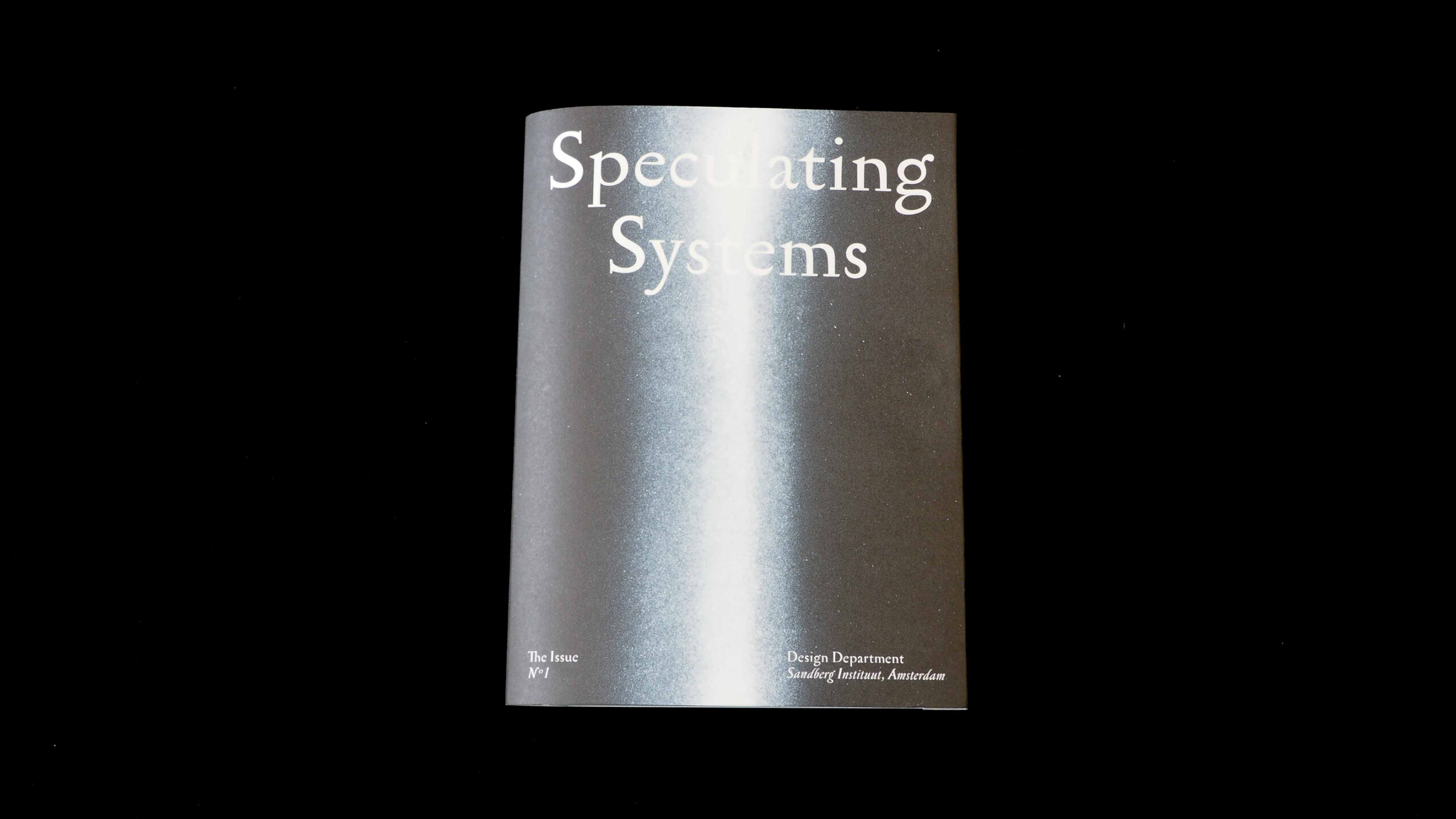The Issue — Speculating Systems
The Issue — Speculating Systems
Speculating Systems is the first of a series of publications that will be published yearly by the Sandberg Instituut Design Department. This year’s publication contains the students’ graduation essays and first year students’ column texts revolving around the concept of ‘systems’, understood as the structures and interconnections we are all part of. Underlying the series is the notion that every issue will work as a time capsule, revealing the interests and concerns of the master students at a very specific moment in time.
The idea of a system has been merged in the design itself, with the bookbinding being the most surprising aspect of the book. Folded in half, each page reveals an inner section containing additional text, creating different layers of information and different ways to access it. Every inner page feels like a new area to be discovered, allowing the reader to wonder about the systematic interconnections hidden in the essays of the book. The typography is mastered and used consistently, with a sans and a serif type interacting with each other. This publication leaves the reader with the reassuring awareness that a good book design can be done without spending too much money.
- Auteur
- Design Department — Sandberg Instituut Amsterdam, Nikki Brörmann (Tutor), Annelys De Vet (Head of the department)
- Serie
- Yes
- Oplage
- Limited Edition of 250, hand-signed
- Omvang
- 191
- Prijs
- 20 euro
- Verschijningsdatum
- June 2016
- Uitgever / Opdrachtgever
- Design Department, Sandberg Instituut — Think Tank for Visual Strategies
- Ontwerper(s)
- Daniel Seemeyer (MA Design Sandberg Instituut), currently based in Amsterdam, originally from Düsseldorf. Andrea Karch (MA Design Sandberg Instituut), currently based in Amsterdam, originally from Bremen.
- Drukkerij
- Ten Brink, Meppel
- DTP / Zetterij
- Daniel Seemeyer, Andrea Karch
- Boekbinderij
- Boekbinderij Hennink, Amsterdam
- Materiaal
- Interior: Munken Print White 100 g/m², 1,5 Volume (Arctic Paper). Cover: Munken Print White 300 g/m² (Arctic Paper).
- Lettertype
- Serapion, Founders Grotesk (through Fontstand)
Speculating Systems is the first of a series of publications that will be published yearly by the Sandberg Instituut Design Department. This year’s publication contains the students’ graduation essays and first year students’ column texts revolving around the concept of ‘systems’, understood as the structures and interconnections we are all part of. Underlying the series is the notion that every issue will work as a time capsule, revealing the interests and concerns of the master students at a very specific moment in time.
The idea of a system has been merged in the design itself, with the bookbinding being the most surprising aspect of the book. Folded in half, each page reveals an inner section containing additional text, creating different layers of information and different ways to access it. Every inner page feels like a new area to be discovered, allowing the reader to wonder about the systematic interconnections hidden in the essays of the book. The typography is mastered and used consistently, with a sans and a serif type interacting with each other. This publication leaves the reader with the reassuring awareness that a good book design can be done without spending too much money.
- Auteur
- Design Department — Sandberg Instituut Amsterdam, Nikki Brörmann (Tutor), Annelys De Vet (Head of the department)
- Serie
- Yes
- Oplage
- Limited Edition of 250, hand-signed
- Omvang
- 191
- Prijs
- 20 euro
- Verschijningsdatum
- June 2016
- Uitgever / Opdrachtgever
- Design Department, Sandberg Instituut — Think Tank for Visual Strategies
- Ontwerper(s)
- Daniel Seemeyer (MA Design Sandberg Instituut), currently based in Amsterdam, originally from Düsseldorf. Andrea Karch (MA Design Sandberg Instituut), currently based in Amsterdam, originally from Bremen.
- Drukkerij
- Ten Brink, Meppel
- DTP / Zetterij
- Daniel Seemeyer, Andrea Karch
- Boekbinderij
- Boekbinderij Hennink, Amsterdam
- Materiaal
- Interior: Munken Print White 100 g/m², 1,5 Volume (Arctic Paper). Cover: Munken Print White 300 g/m² (Arctic Paper).
- Lettertype
- Serapion, Founders Grotesk (through Fontstand)



